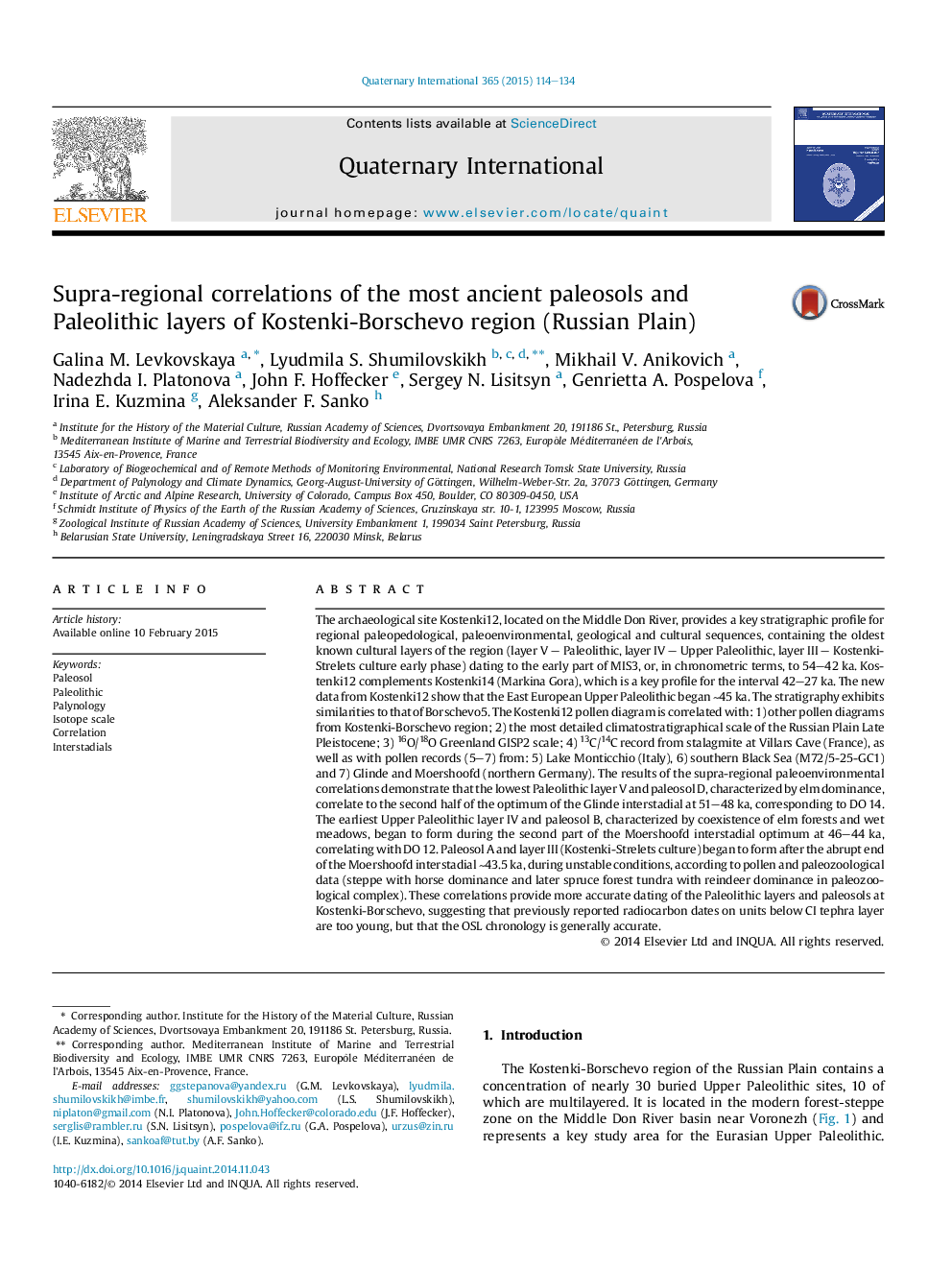| کد مقاله | کد نشریه | سال انتشار | مقاله انگلیسی | نسخه تمام متن |
|---|---|---|---|---|
| 1040907 | 1484132 | 2015 | 21 صفحه PDF | دانلود رایگان |
عنوان انگلیسی مقاله ISI
Supra-regional correlations of the most ancient paleosols and Paleolithic layers of Kostenki-Borschevo region (Russian Plain)
دانلود مقاله + سفارش ترجمه
دانلود مقاله ISI انگلیسی
رایگان برای ایرانیان
کلمات کلیدی
موضوعات مرتبط
مهندسی و علوم پایه
علوم زمین و سیارات
زمین شناسی
پیش نمایش صفحه اول مقاله

چکیده انگلیسی
The archaeological site Kostenki12, located on the Middle Don River, provides a key stratigraphic profile for regional paleopedological, paleoenvironmental, geological and cultural sequences, containing the oldest known cultural layers of the region (layer V - Paleolithic, layer IV - Upper Paleolithic, layer III - Kostenki-Strelets culture early phase) dating to the early part of MIS3, or, in chronometric terms, to 54-42Â ka. Kostenki12 complements Kostenki14 (Markina Gora), which is a key profile for the interval 42-27Â ka. The new data from Kostenki12 show that the East European Upper Paleolithic began â¼45Â ka. The stratigraphy exhibits similarities to that of Borschevo5. The Kostenki12 pollen diagram is correlated with: 1) other pollen diagrams from Kostenki-Borschevo region; 2) the most detailed climatostratigraphical scale of the Russian Plain Late Pleistocene; 3) 16O/18O Greenland GISP2 scale; 4) 13C/14C record from stalagmite at Villars Cave (France), as well as with pollen records (5-7) from: 5) Lake Monticchio (Italy), 6) southern Black Sea (M72/5-25-GC1) and 7) Glinde and Moershoofd (northern Germany). The results of the supra-regional paleoenvironmental correlations demonstrate that the lowest Paleolithic layer V and paleosol D, characterized by elm dominance, correlate to the second half of the optimum of the Glinde interstadial at 51-48Â ka, corresponding to DO 14. The earliest Upper Paleolithic layer IV and paleosol B, characterized by coexistence of elm forests and wet meadows, began to form during the second part of the Moershoofd interstadial optimum at 46-44Â ka, correlating with DO 12. Paleosol A and layer III (Kostenki-Strelets culture) began to form after the abrupt end of the Moershoofd interstadial â¼43.5Â ka, during unstable conditions, according to pollen and paleozoological data (steppe with horse dominance and later spruce forest tundra with reindeer dominance in paleozoological complex). These correlations provide more accurate dating of the Paleolithic layers and paleosols at Kostenki-Borschevo, suggesting that previously reported radiocarbon dates on units below CI tephra layer are too young, but that the OSL chronology is generally accurate.
ناشر
Database: Elsevier - ScienceDirect (ساینس دایرکت)
Journal: Quaternary International - Volume 365, 16 April 2015, Pages 114-134
Journal: Quaternary International - Volume 365, 16 April 2015, Pages 114-134
نویسندگان
Galina M. Levkovskaya, Lyudmila S. Shumilovskikh, Mikhail V. Anikovich, Nadezhda I. Platonova, John F. Hoffecker, Sergey N. Lisitsyn, Genrietta A. Pospelova, Irina E. Kuzmina, Aleksander F. Sanko,